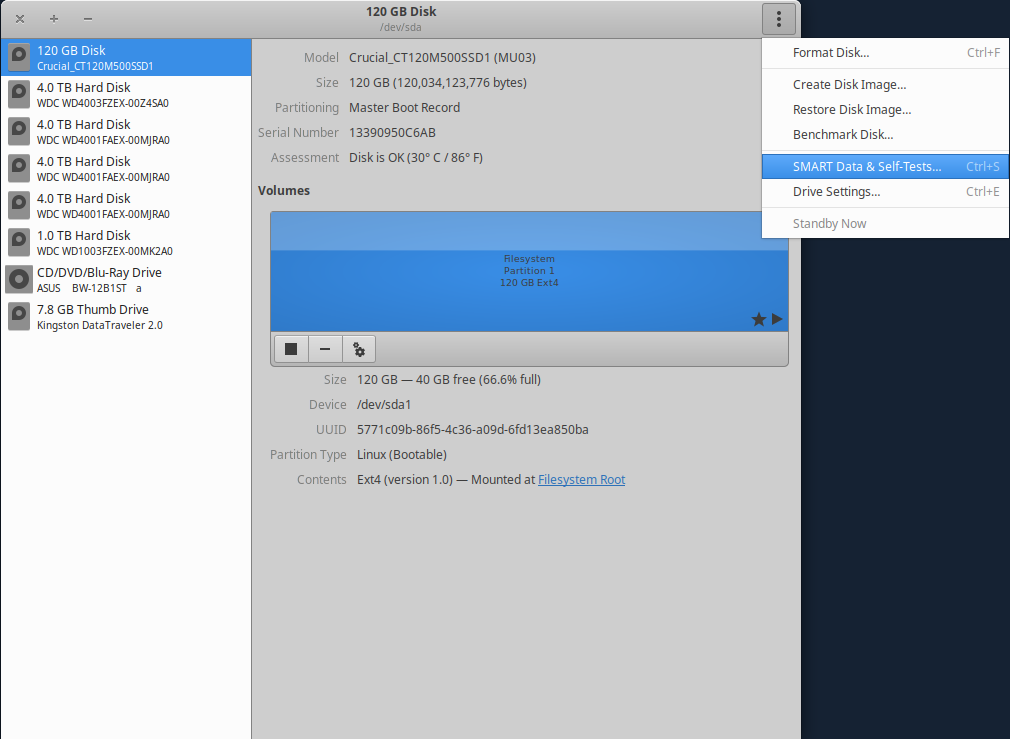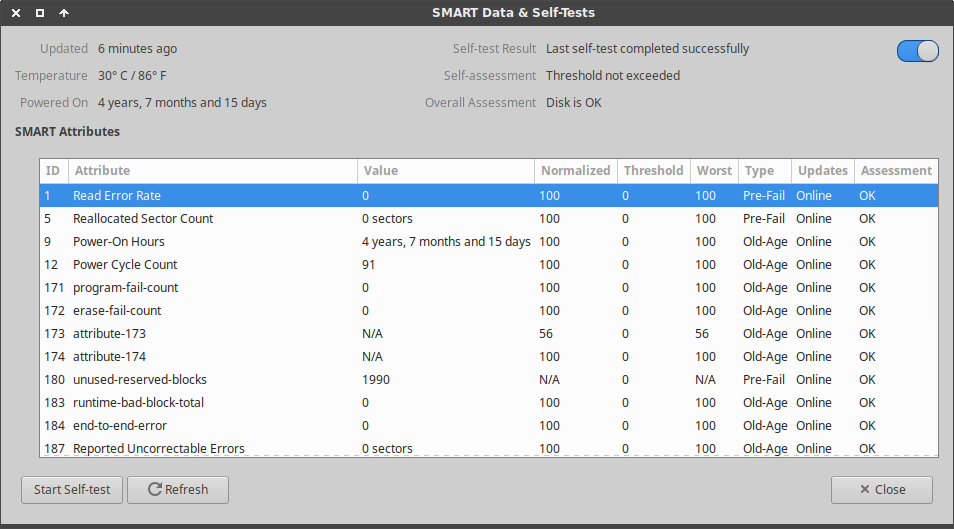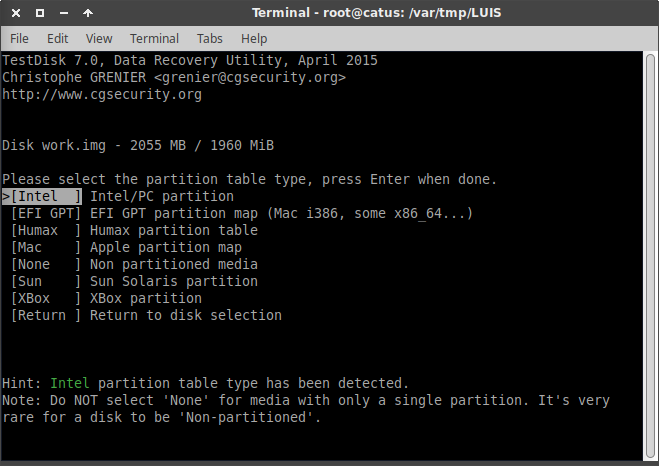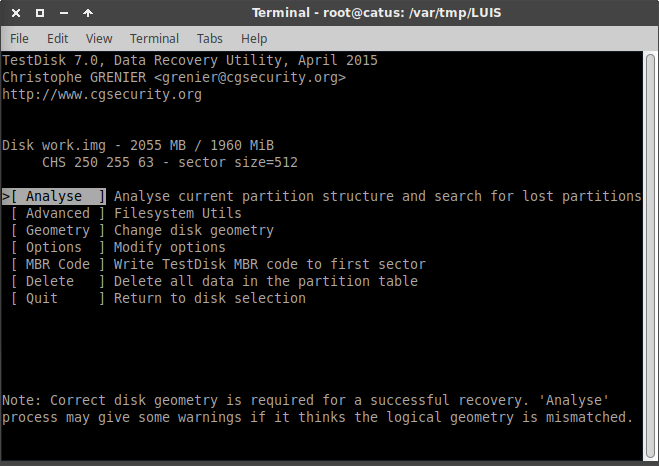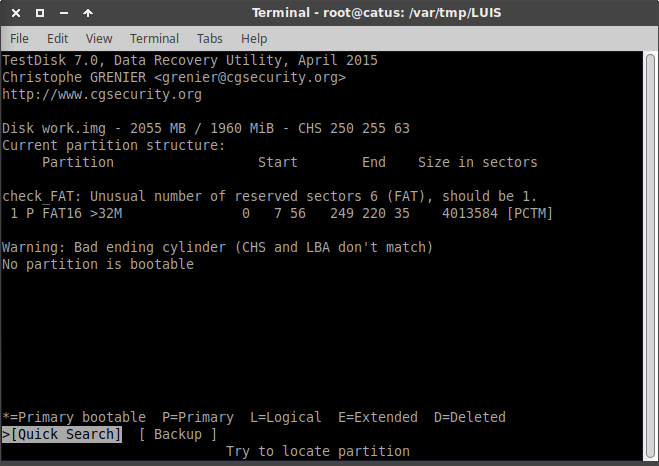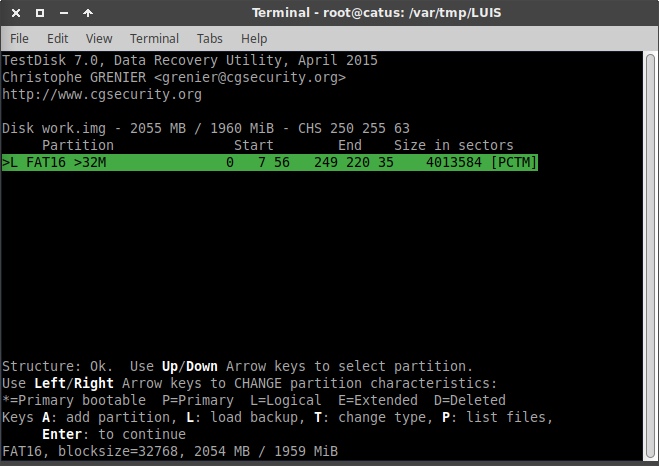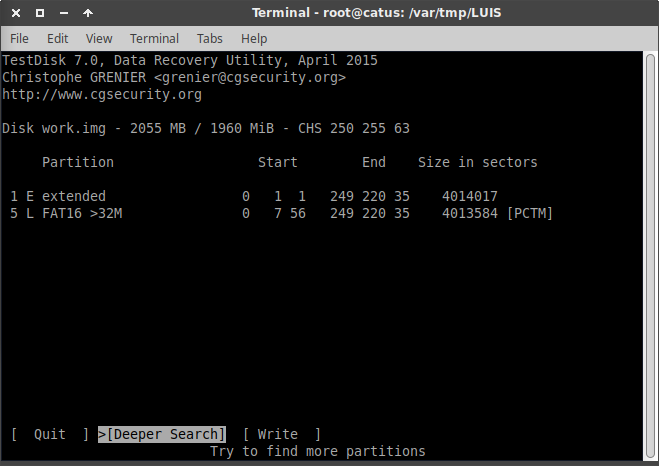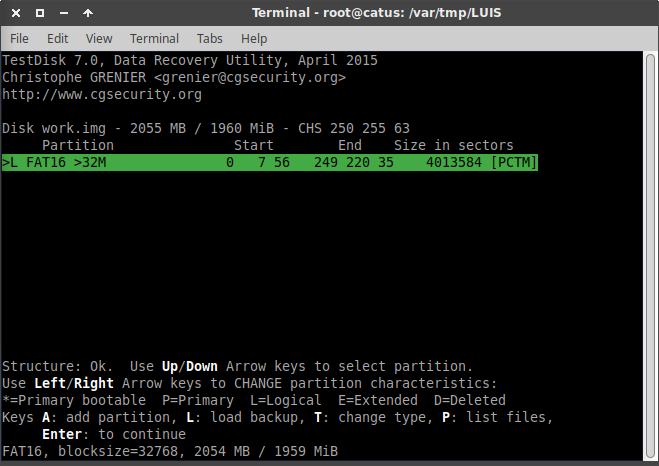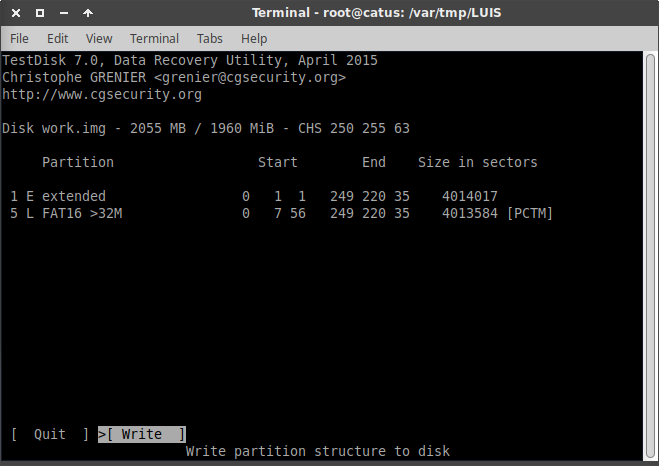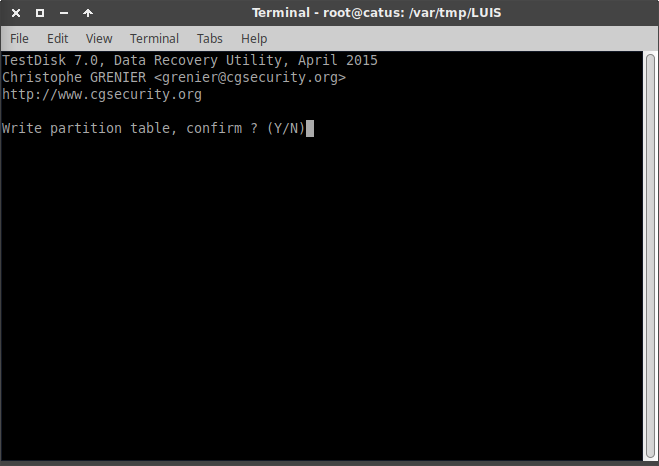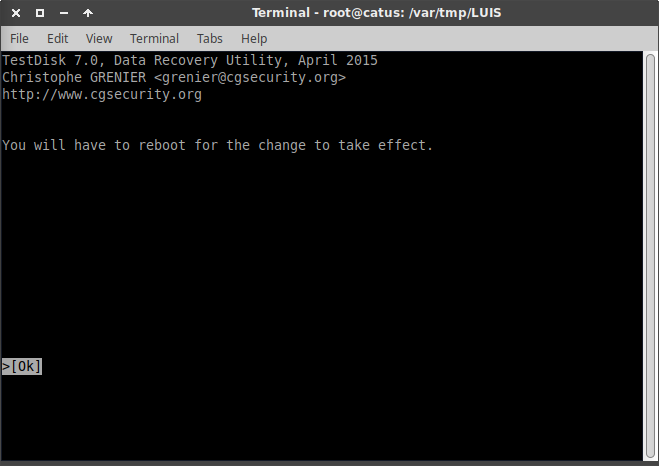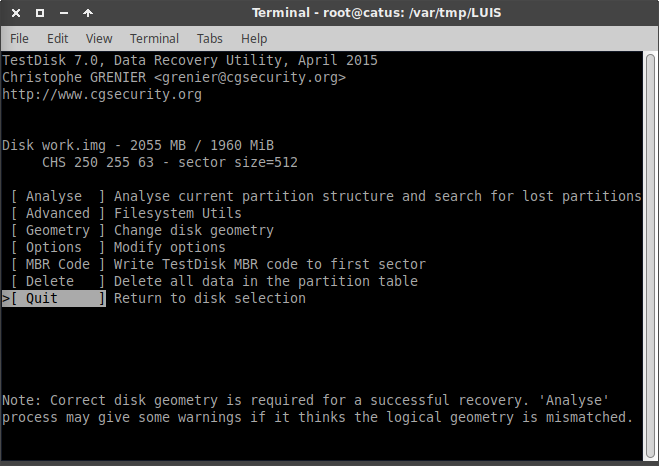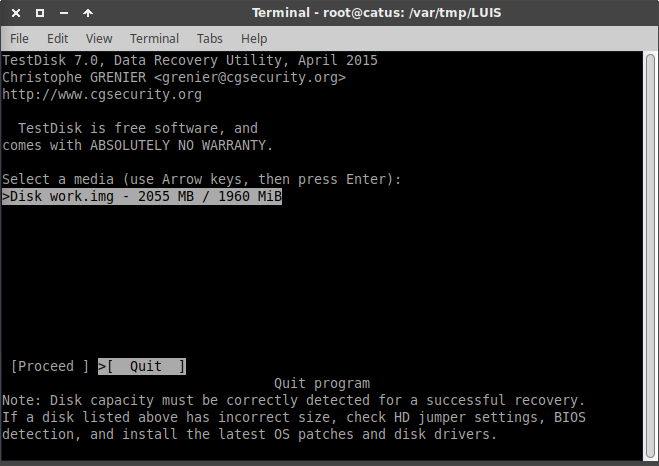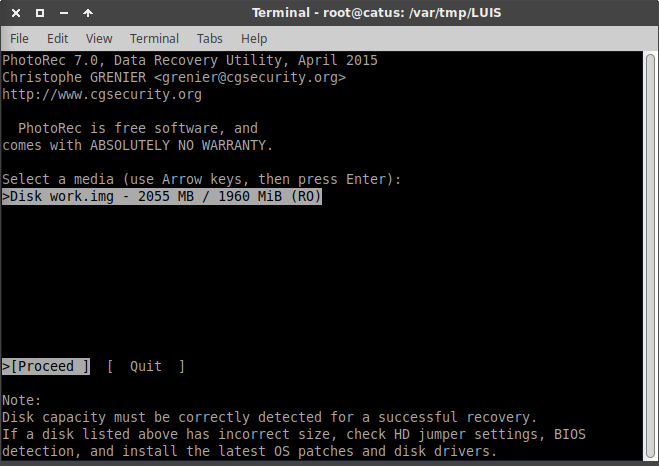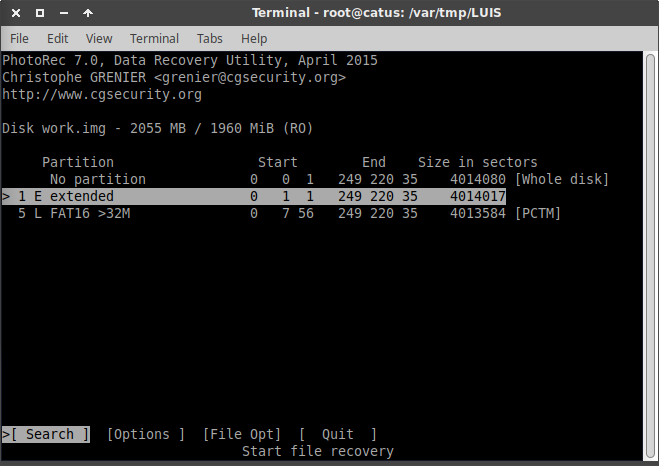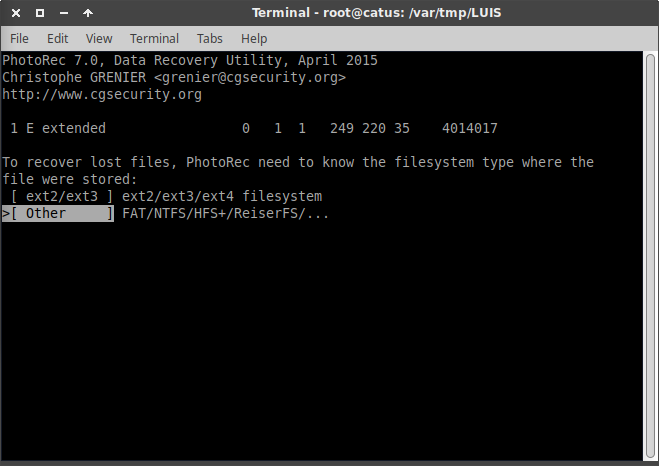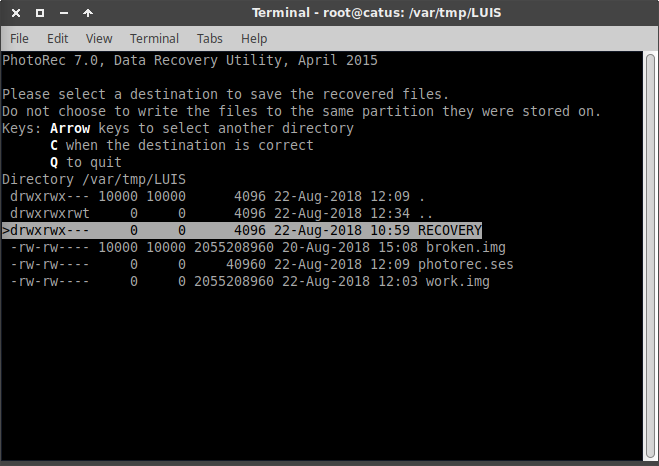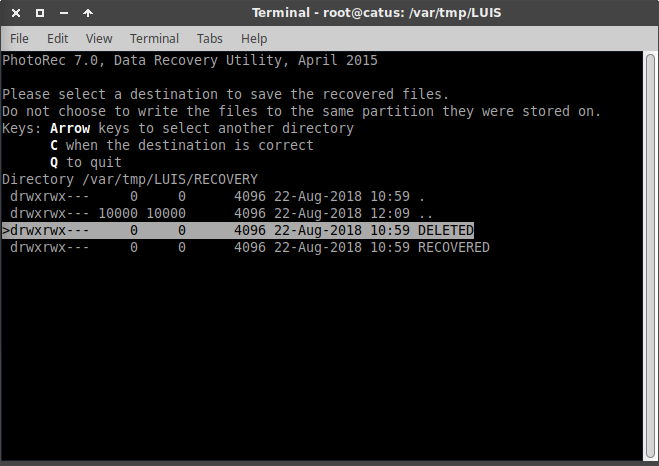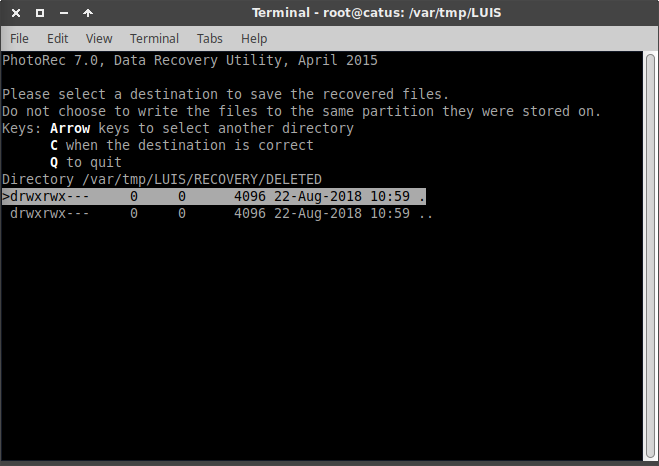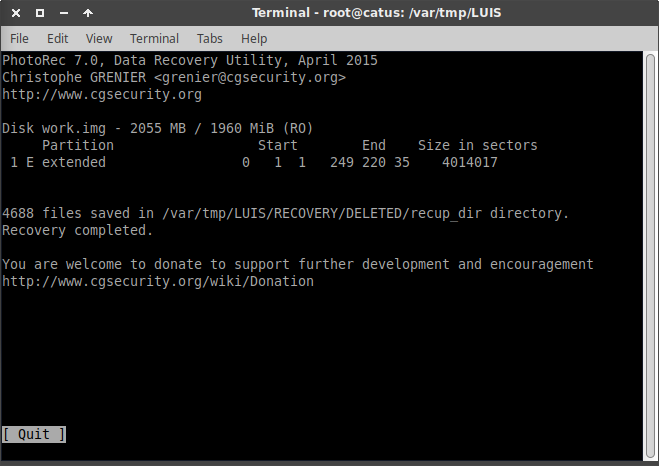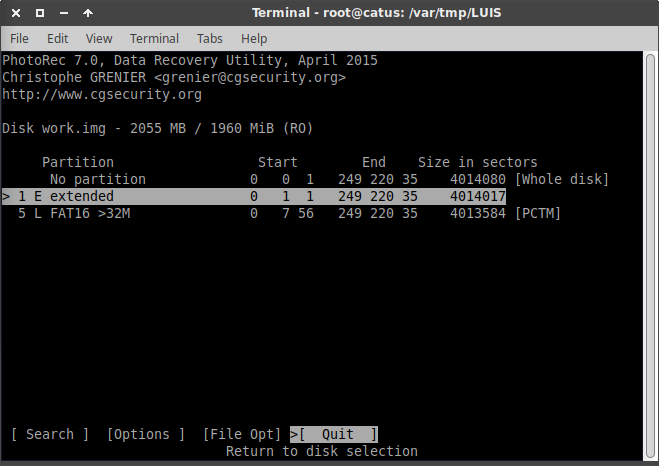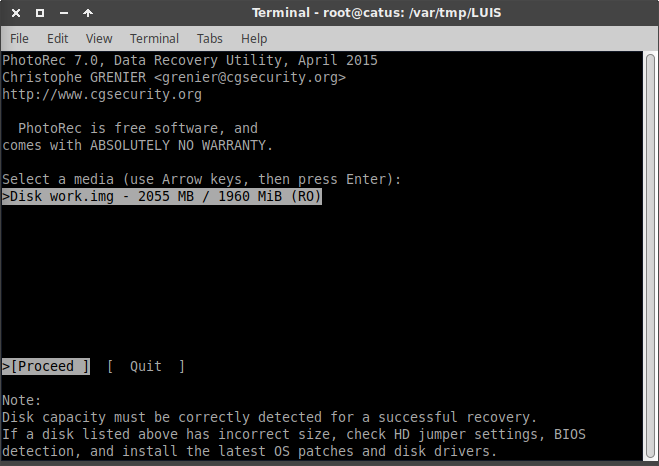Table of Contents
Disk Information
Handy commands:
- lsblk – Lists all attached drives, including partitions
Ex:lsblk
- udevadm – Gives detailed information about a drive
Ex:udevadm info --query=all --name=/dev/sd<X> | grep ID_SERIAL_SHORT
Disk Testing
Handy Commands:
- Checking a drive's SMART attributes:
- GUI:
- Install gnome-disk-utility (If not already installed)
apt-get install gnome-disk-utility
- Run:
gnome-disks
- Command Line:
- Install smartmontools
apt-get install smartmontools
- Overall health report:
smartctl -H /dev/sd<X>
- Detailed SMART information:
smartctl -i /dev/sd<X>
- Running SMART tests (non-destructive to data)
- GUI:
gnome-disks
Open “SMART Data & Self-Tests”, click “Start Self-Test”, and select a test to run. - Command Line:
smartctl --test=short /dev/sd<X>
smartctl --test=long /dev/sd<X>
- Thoroughly Testing Drive Media (CAUTION: DESTRUCTIVE TO DATA)
badblocks -vws /dev/sd<X>
Data Recovery
If the hardware is suspect, then the first thing to do is get a byte-for-byte copy of the drive's contents into a disk image file. The less time spent using possibly faulty hardware the better. For this, use ddrescue instead of dd, as ddrescue will repeatedly try to recover from errors as it tried to salvage data, whereas dd will simply fail.
apt-get install gddrescue ddrescue -A -f /dev/sd<X> broken.img
This copy will remain unchanged while we work. Make a copy of this file, and only alter the copy. This way, if anything goes awry then we can go back to square one without having to rely on possibly faulty hardware again.
cp broken.img work.img
Use testdisk to search for and repair disk partitions.
apt-get install testdisk testdisk work.img
Using testdisk involves using the arrow, escape, and enter keys.
Use photorec to recover deleted files.
mkdir RECOVERY RECOVERY/DELETED RECOVERY/RECOVERED
photorec work.img
- Select directory to save recovered files.
Files that the filesystem thinks have been deleted are now stored in RECOVERY/DELETED/. Filenames are most likely trashed, so the only way to identify a file is to open it up.
Recover other files:
- Find a list of partitions:
fdisk -lu work.img Disk work.img: 1.9 GiB, 2055208960 bytes, 4014080 sectors Units: sectors of 1 * 512 = 512 bytes Sector size (logical/physical): 512 bytes / 512 bytes I/O size (minimum/optimal): 512 bytes / 512 bytes Disklabel type: dos Disk identifier: 0x00000000 Device Boot Start End Sectors Size Id Type work.img1 63 4014079 4014017 1.9G 5 Extended work.img5 496 4014079 4013584 1.9G 6 FAT16
- Find the offset from the beginning of the disk image file to the partition that you want to work with:
OFFSET = SECTOR-SIZE * START = 512 * 496 = 253952
- Attach the partition to a loopback device:
losetup -o 253952 /dev/loop0 work.img
- Attempt to fix the partition:
fsck -y /dev/loop0 2>&1 | tee fsck.log
- Mount the fixed partition read-only:
mount -o ro /dev/loop0 /mnt
- Copy files into
RECOVERY/RECOVERED:
cd RECOVERY/RECOVERED ; (cd / && tar -cvf - mnt) | tar -xvBpf - 2>&1 | tee ../tar.log
- Optional: Get a list of files for which tar failed:
grep ^tar: ../tar.log
- Optional: Find a list of files of size 0 bytes:
find . -size 0 -ls 2>&1 | tee ../zero-size.log
- Unmount the filesystem:
umount /mnt
- Detach the loopback file:
losetup -d /dev/loop0
Final contents of RECOVERY directory:
RECOVERY/DELETED– Files recovered that the filesystem previously thought had been deleted.RECOVERY/RECOVERED– Files that could be copies off of the disk image. Some files may be corrupt though.- fsck.log – A log of all the changes that fsck made while fixing the filesystem.
- tar.log – A log of all the files copied from the disk image into
RECOVERY/RECOVERED. Any files that could not be copied are listed here and may be found withgrep ^tar: log.tar. - zero-size.log – A log of all the files in
RECOVERY/RECOVEREDthat are empty.

